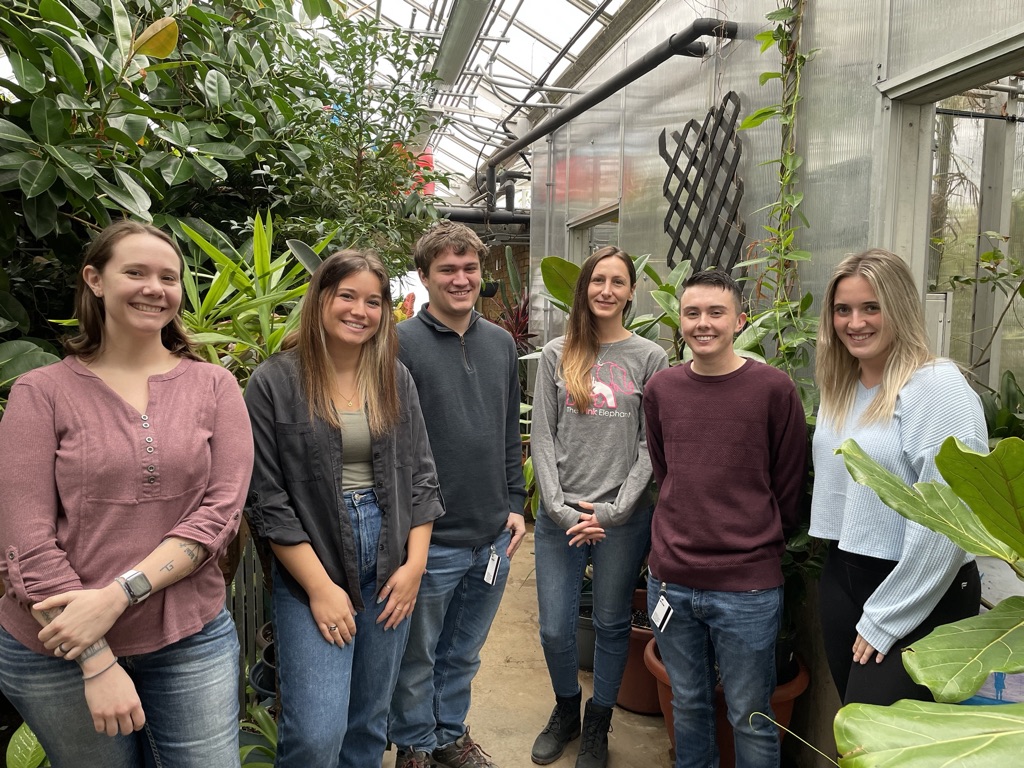What determines your social behavior as you develop into an adult? While this is a complex question to answer, understanding how the brain develops can provide critical insights.
For two decades, Heather Caldwell, Ph.D., professor in the Department of Biological Sciences at ¬È∂π ”∆µ◊Ó–¬◊Ó»´ University, has been studying what happens within the brain that potentially modulates social behavior such as aggression, social memory and maternal care. Her research lab group is focused on understanding how brain hormones (oxytocin and vasopressin) affect behavior and evaluating what may differ, or be the same, in males and females.

“Our most recent work has focused on how oxytocin and vasopressin might contribute to brain development,” Caldwell said. “Specifically, the brain structures that are important for ‘maleness’ and ‘femaleness’ and the subsequent sex-specific behaviors that these brain regions regulate.”
While oxytocin and vasopressin are known to be important to the modulation of social behavior in adulthood and in juveniles. Caldwell’s group is one of the first to look at these two systems and what they may be doing much earlier in development and how it may contribute to what it may do later in life.
Caldwell, who also serves as the interim associate dean of graduate affairs in the College of Arts and Sciences, was recently awarded a three-year ($456,000) R15 grant from the National Institutes of Health (Eunice Kennedy Shriver National Institute of Child Health & Human Development) that is focused on understanding the central embryonic vasopressin system. The grant specifically supports the research, education and training of future scientists through graduate and undergraduate research support for students interested in a career in biomedical/behavioral sciences.
“We are interested in how altering the development of the vasopressin system may affect males and females as they mature into adults,” Caldwell said. “We are looking at how vasopressin impacts brain structures during early development ultimately altering their developmental trajectory.”
“For us, this is really exciting because when we think about brain development, we think about the organization of neural circuits, the various structures of the brain, and how they build a foundation,” Caldwell said. “That foundation is really important so that animals have adaptive behavioral responses later in life, which are really important for survival.”
“The receptors for oxytocin and vasopressin, the signaling piece, is kind of where the action is,” Caldwell said. “The receptors are scattered all over the brain. We see this across species. Even though the hormones themselves are made in discrete places, their capacity to affect neural circuits is pretty widespread because there are these receptors expressed all over the place.”
Caldwell’s group will test how manipulation of one of the vasopressin receptors, the vasopressin 1a receptor, directly contributes to the development of the neural circuitry that supports social behavior in females and males.
“The idea is that we can look at that developing vasopressin system, manipulate it in some way and then see changes in behavior in adulthood,” Caldwell said. “We’ve previously found this to be the case with the oxytocin system. So, we’re confident that we’ll see something similar with the vasopressin system. That said, we expect the vasopressin and the oxytocin systems to have unique roles in brain development in males and females.”
Neurodevelopment and neuropsychiatric disorders
Several human neuropsychiatric disorders with neurodevelopmental origins (including schizophrenia), which have been linked to the vasopressin system, have a known sex-bias skewed towards males, and are often associated with altered social behaviors. The researchers hope that the data generated from the proposed experiments will provide critical insights into some of the shared origins of these disorders and possibly lead to more targeted interventions.
“Schizophrenia is a really complex disorder, but there is a lot of evidence that shifts in early brain wiring increase susceptibility,” Caldwell said. “What is happening remains largely unknown because many questions can’t be easily answered in humans. So, some of this work is to try to understand brain development, which may help inform our understanding of neurodevelopmental disorders down the road.”
“When neural circuits are first organized in development, any disruptions are going to have a ripple effect that can affect behavior,” Caldwell said. “In our studies we try look at a lot of different behaviors to try to understand the scope of what the disruption has caused. For instance, we’ll be looking at maternal care and whether modified vasopressin signal in early life alters the quality of maternal care later in life.”
To learn more about Caldwell’s Neuroendocrinology and Behavior Lab Group, visit:
# # #
Media Contacts:
Jim Maxwell, jmaxwel2@kent.edu, 330-672-8028
Dr. Heather Caldwell, hcaldwel@kent.edu, 330-672-3636


